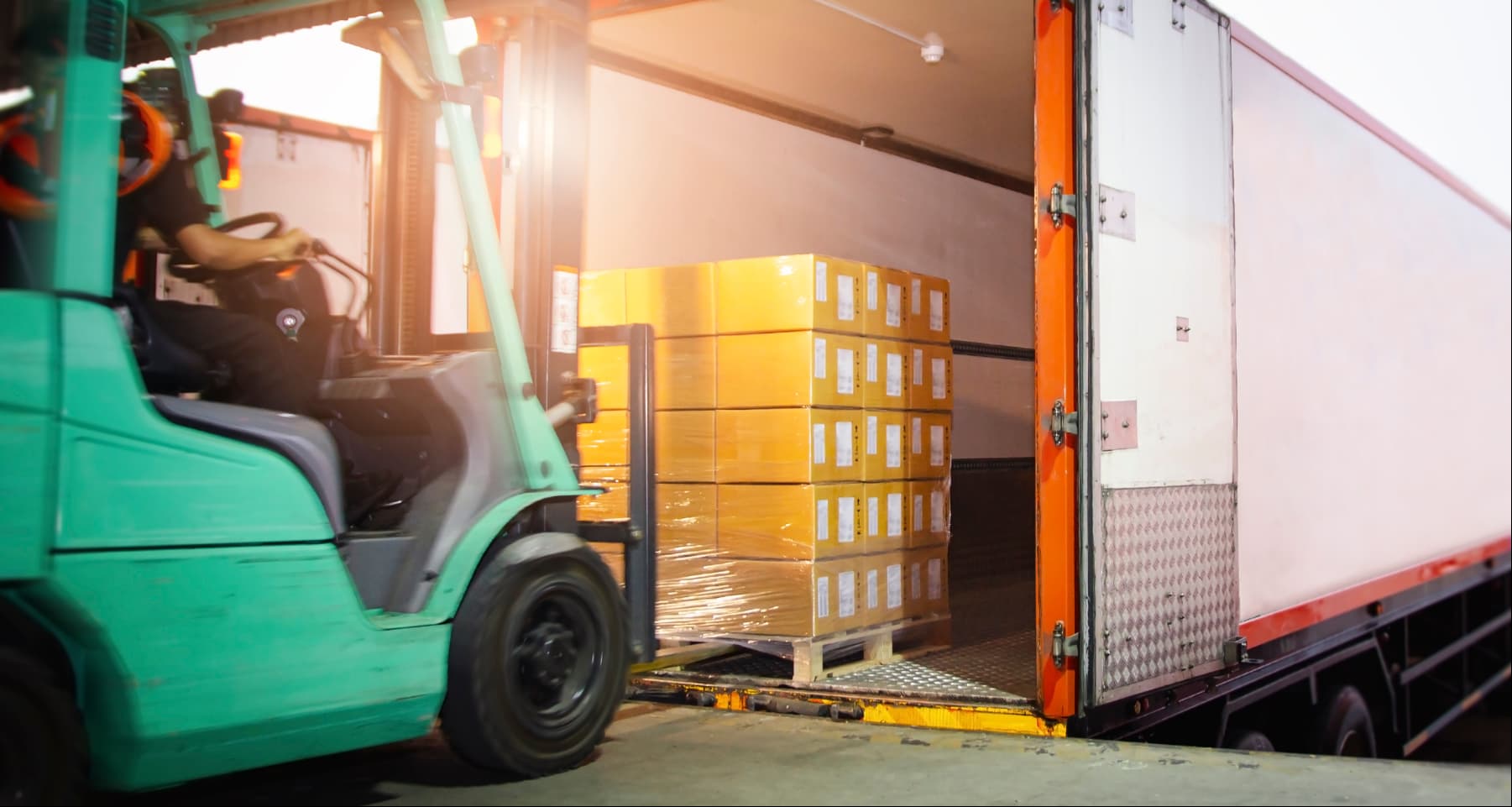Unless you’re deeply involved in the trucking industry, you probably have little idea of what a lumper is and why they are needed.
Lump·er, noun
- A laborer who unloads cargo.
If you do know what a lumper is, then you have probably asked yourself why we need lumpers in the first place, and why do you have to pay lumper fees? Either way, this article gives you a deep dive into the world of lumpers by answering the following questions:
- What does a lumper do?
- Why do we need to pay lumper fees?
- Why are there mixed feelings about lumpers?
- What is the average lumper fee?
So let’s get into it!
What does a lumper do?
A lumper service is a third-party operation hired by a shipper, carrier, broker, or warehouse to unload the freight from a truck trailer when it arrives at a warehouse facility.
Most lumpers offer services by professionals who understand the intricacies of unloading (and loading) a trailer, splitting pallets, how to move the freight securely and efficiently, and are familiar with the ins and outs of operating within a major warehouse.
The role of lumpers in the supply chain
Lumper services are primarily used in food warehouses where the freight load has to be moved quickly and carefully. The way a lumper service works is that a driver arrives at a warehouse with freight that needs unloading. The lumper crew unloads the truck, and they charge a lumper fee for their service.
Before COVID, the driver would pull up to the dock and enter the warehouse to pay for the lumper, but since the pandemic that process has become more contactless and digital. As the need for a digital payment form became a necessity, the industry recognized that a modernization of the transaction was not only needed but much faster and more secure. Now, drivers can make the payment for the lumper fees without even leaving their cab.
Why do we need to pay lumper fees?
You may ask yourself why lumpers are even needed? Aren’t drivers supposed to help unload their own freight? And shouldn’t warehouses have their own workers to load and unload goods?
The necessity of lumpers
Although some warehouses have their own in-house unloading workers, they are less common – especially when it comes to unloading refrigerated trucks at high-volume food warehouses. Because of the sheer volume of deliveries, it is more cost-effective for companies to hire a third-party lumper service for unloading, which can save them millions of dollars a year in staff and labor costs. It is the lumpers’ sole responsibility to load and unload, and they have it down to an art form. This is why you are more likely to meet a third-party lumper service when you arrive at a warehouse facility like these.
The benefits of using lumpers
Lumpers are also essential to take the strain off drivers who are already on the road for many hours a day. Traditionally, drivers were part of unloading their own trucks, and even today, there is often the option for drivers to “lump” or unload their own trailers. But with the higher volume of truckloads paired with a growing shortage of drivers (both factors accelerated by COVID) it simply makes more sense to relieve drivers of this added task, so they can get back on the road and move more loads quicker. It also gives drivers time to get some much-needed rest and avoid risking injuries. Plus, the quicker unloading has a positive effect on the drivers’ hours of service and ELD mandates, which are growing increasingly strict to limit the number of hours a driver can drive in a day.
Why are there mixed feelings about lumpers?
Let’s face it: lumpers are sometimes viewed in a negative light. Although there may be the occasional bad experience, lumpers are a necessity to keep freight running smoothly in the supply chain. Also, most of the pain points experienced with lumpers are around the cost and the lumper fee itself. The friction often occurs when it comes to reimbursing the cost of the lumper. When a carrier or broker hires a lumper service, the driver pays the lumper fee to get the truck unloaded. The lumper fee is reimbursable to the driver by the carrier or broker.
The challenges of traditional payment methods
It is in this process where things can turn sour because the industry is marred by age-old paper-based payment methods like cash, industry-specific checks, and lumper receipts that can take a long time to process and reconcile. The driver may have to wait a long time to get reimbursed, and in the worst case, the driver isn’t reimbursed at all because of poor reconciliation. Luckily, the payment process is rapidly being modernized. Digital transactions not only make the payments instant, but they also secure the lumper receipt and audit trail, so there is no doubt who and how much gets reimbursed.
What is the average lumper fee?
Lumper fees range between $25-500. The rate is determined by the amount of work and hours the lumper workers have to put in but also depends on the contract the lumper service has with a shipper, carrier, or warehouse facility. The cost is calculated after unloading is finished so any additional fees for splitting pallets or reloading the trailer can be accounted for. Either way, an expedited process is of the essence to get the truck off the dock quickly.
do you pay each week?
lumper fee cost?
Factors affecting lumper fees
The following are some of the key factors that determine the lumper fee:
- Type of freight: Certain types of freight, especially perishable goods, require more careful handling, increasing the lumper fee.
- Volume of freight: Larger shipments may require more labor and time, thus increasing the cost.
- Time of day: Unloading during off-peak hours might be cheaper compared to peak times when warehouse staff is scarce.
- Additional services: Services like palletizing, reloading, or special handling instructions can also affect the fee.
While it is the driver’s responsibility to pay for the lumper service on-site, they’re not responsible for absorbing the cost. It is also crucial that carriers and brokers know ahead of time if they need to pay lumper fees so the drivers are prepared. Again, a digital payment process is preferred because drivers don’t need to carry cash, scramble to find an industry-specific check (similar to travelers checks), or confirm amounts or codes with numerous phone calls. The digital transaction ensures the right amount and provides swift payment and reconciliation.
The evolution of lumper payments
From paper to digital
Historically, the process of paying lumper fees involved a lot of paperwork and cash transactions. This system was not only cumbersome but also prone to errors and delays. However, with advancements in technology, the industry is shifting towards digital payments, streamlining the process and enhancing transparency.
Benefits of digital transactions
Digital payment solutions offer numerous advantages over traditional methods:
- Speed and efficiency: Digital transactions are processed instantly, reducing waiting times and speeding up the unloading process.
- Security: Digital payments are secure, reducing the risk of fraud and theft associated with cash transactions.
- Convenience: Drivers can make payments directly from their trucks, eliminating the need to carry cash or checks and reducing the hassle of manual paperwork.
- Transparency: Digital records provide a clear audit trail, making it easier to track and reconcile payments.
The importance of streamlining lumper payments
Enhancing efficiency in the supply chain
Streamlining lumper payments is crucial for maintaining the efficiency of the supply chain. By reducing the administrative burden and speeding up the payment process, digital solutions help keep the supply chain moving smoothly. This efficiency is particularly important in high-volume warehouses where delays can have a significant impact on operations and delivery schedules.
Improving driver experience
For drivers, the transition to digital payments means less hassle and more time on the road. Digital solutions reduce the need for paperwork, cash handling, and waiting for reimbursements. This improvement in the payment process contributes to a better overall experience for drivers, allowing them to focus on their primary job – delivering goods safely and on time.
The valued role of lumpers in modern logistics
Lumper services and lumper fees are an unavoidable part of the supply chain – and even though there may be individual concerns, lumpers are a great help. They play a critical role in ensuring that goods are unloaded quickly and efficiently, keeping the supply chain moving smoothly.
As the industry continues to evolve, so does the way we handle lumper payments. Digital payment solutions are revolutionizing the process, making it faster, more secure, and more convenient for everyone involved. Relay continues to partner with lumpers nationwide to help streamline payments for the entire supply chain industry.
Download the Relay app today and start making fast and seamless lumper payments. Embrace the future of logistics with Relay, and experience the benefits of a streamlined, efficient payment process.

